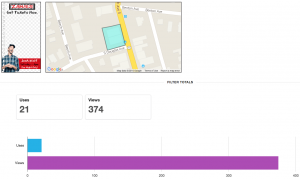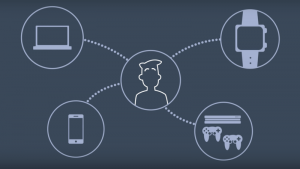
Like most industries, the predictions for COVID-19’s long-term impact on retail vary. However, the immediate result of the pandemic and associated closures was a large-scale disruption of commerce. In retail, brick-and-mortar retailers took the brunt of the hit as many were forced to close their doors until further notice. As a result of these sudden changes, some experts predict we will see a rise in retail bankruptcies in the coming months.
Other indicators and trends point to a struggling industry in future months, but the severity of market contraction likely depends on how fast the nation as a whole is up and running. According to the World Retail Congress, “evidence from China and Italy indicates that we can expect a 20–30 percent reduction in consumer spending as this crisis continues.” The National Retail Federation and Hackett Associates released a report estimating that imports at U.S. retail container ports dropped to their lowest level in five years in March. The report also projects that imports will remain below normal throughout the COVID-19 pandemic.
Interestingly, there is some variation in impact within the retail industry. For some businesses, such as those in e-commerce or groceries, there has been a surge in business. These companies are scrambling to hire enough workers to keep up with demand. In those sectors—deemed essential—employee safety is paramount. OSHA offers guidelines for safe practices during this time.
On the other hand, many other retailers have completely lost their only channels to market. In addition to physical locations being closed for an unspecified amount of time, retail spending is down across the board. Many consumers, in a variety of industries, have experienced furloughs and layoffs in the last few weeks. In fact, retail is one of the hardest-hit industries when it comes to employment as hundreds of thousands of workers have been furloughed or laid off at major retailers like Macy’s, Under Armour, JCPenney, Kohl’s, and the Gap.
While major retailers are taking extreme measures and leveraging established digital assets to stay afloat during the pandemic, many smaller retail businesses are left scrambling to find solutions. The National Retail Federation outlines a number of options for retailers on its website, including the Paycheck Protection Program for small businesses, expanded unemployment insurance for retail workers, and tax relief.
There is a lot of speculation and predictions circling around what will happen to the retail industry over time. The National Retail Federation’s Chief Economist, Jack Kleinhnz recently wrote, “How quickly the country gets a handle on containing the virus will determine the degree of the impact on the economy and how soon businesses can reopen.”
But what about the long-term implications? The World Retail Congress also reported, “over the next 10 weeks we believe that we will see an acceleration of structural change that would have otherwise taken 10 years.” Essentially, there is an unprecedented drive toward digital retail solutions forced by the reality of consumers now having to shop online.
Although online retail is likely to see continued growth, brick-and-mortar won’t disappear. People still like to shop at physical stores. Of the top 50 online retailers, nearly all of them still operate physical stores. Further, some experts also believe that retailers can leverage digital tactics as a smart tool for increasing in-store traffic.
Distributed Agile Software for Retail
As the affected retail industry sectors cling onto e-commerce and hope that social distancing will lead to a quick resolution, digital transformation is going to be essential for future business health, especially small brick-and-mortar retailers whose only channel for business is foot traffic.
In fact, some believe the future of retail will likely look like a blend of retail automation and physical shopping with a bigger focus on the human experience. Amazon caught on to this early with the purchase of Whole Foods and subsequent addition of options like in-store pickup and home delivery. Rather than eliminating brick-and-mortar, Amazon has set the bar for digital transformation in retail by demonstrating the benefit of an omnichannel strategy that integrates digital and physical retail.
Stores like Walmart and Target have jumped aboard by offering delivery and in-store pick-up options. Further, the BOPIS (“Buy Online, Pickup in Store”) model is picking up being used more by Americans and is proving to be a driver of additional sales. Doddle reported that 85 percent of shoppers said they’ve made an additional in-store purchase while picking up an online order. Additionally, when it comes to this omnichannel approach, having a physical location for easy returns is an added convenience that further enhances the human experience.
This 2019 report, “A World in Motion: Retail Digital Transformation Across the Globe, and the Technology Supporting It” stated that 75 percent of U.S. retailers were saying the need for digital transformation had increased since 2016. Now, with the massive impact of COVID-19, digital transformation will likely need to happen much faster by far than previously thought. The upside? Retail businesses that become digital now may have the potential to stay in business through these challenging circumstances and see expanded success down the line.
Unfortunately, retailers with more traditional in-person strategies and those with limited resources may not even know how to get started. Being timely is critically important, but, without resources, a retailer may feel lost or discouraged. This is where distributed agile software development can step in as an effective way to support the transition to a digital retail experience.
Distributed agile software development is essentially geographically dispersed technology teams who can leverage multiple time zones and teams to continually deliver software fast and effectively, while innovating without pause. The distributed agile software development approach is designed to be uninterrupted and to be conducted in a fluid, fast, and iterative way. This could enable any retail business to meet their customers online and stay up and running through our current crisis and then work digital solutions into their business for the future.
It’s likely safe to assume that many retailers, especially small- to medium-sized businesses, don’t have immediate access to in-house software development teams who can quickly begin a digital transformation. For businesses that would need outside assistance to enable distributed agile software development, there are organizations that offer it as a service and are prepared to serve the retail industry now.
Business & Finance Articles on Business 2 Community
(48)







